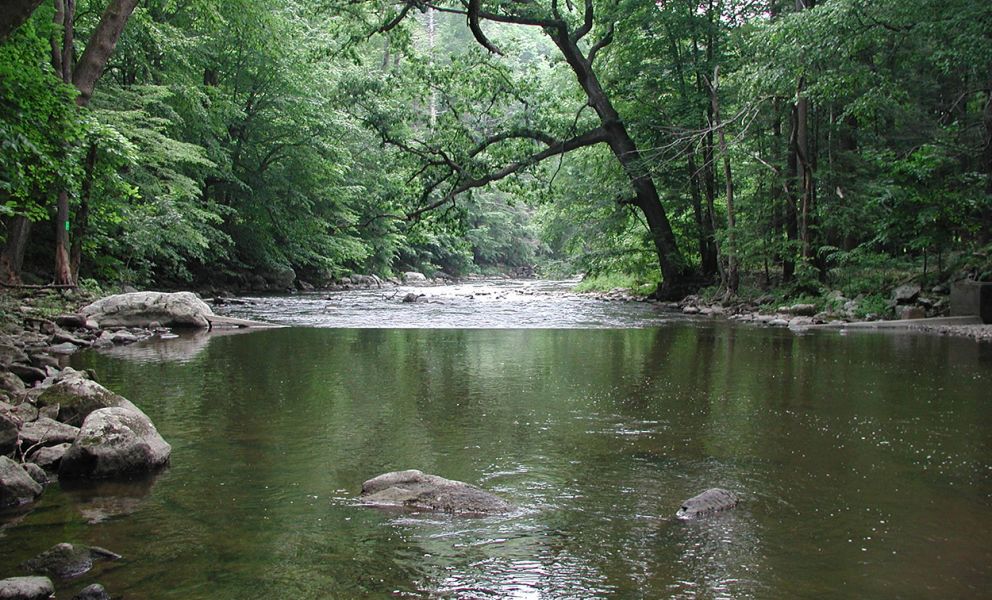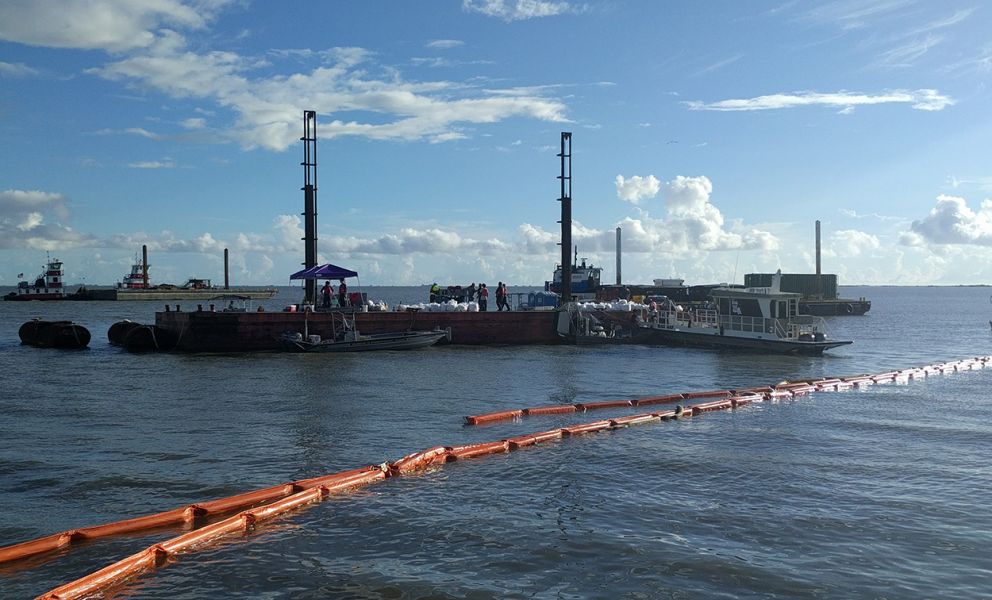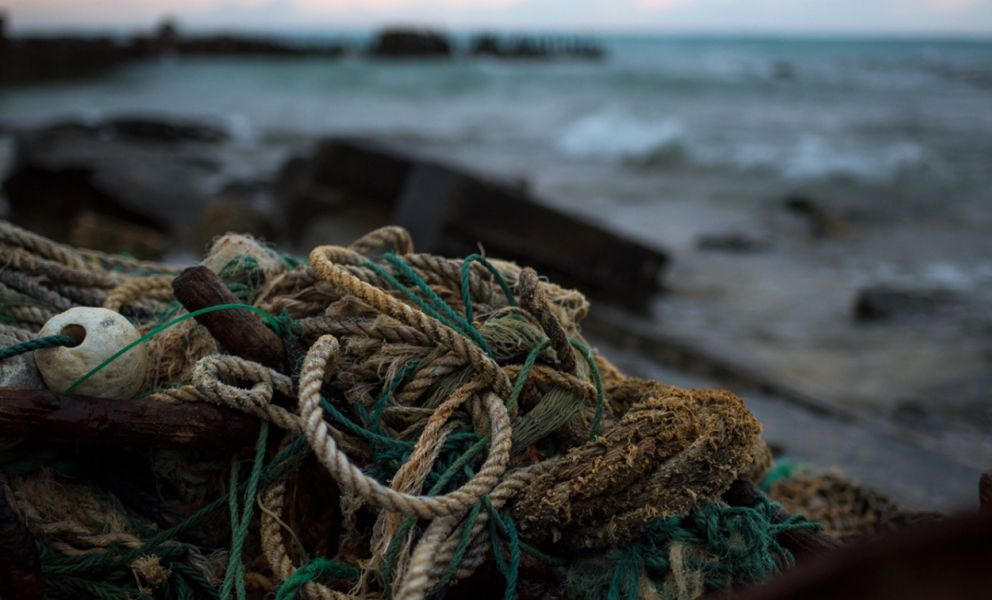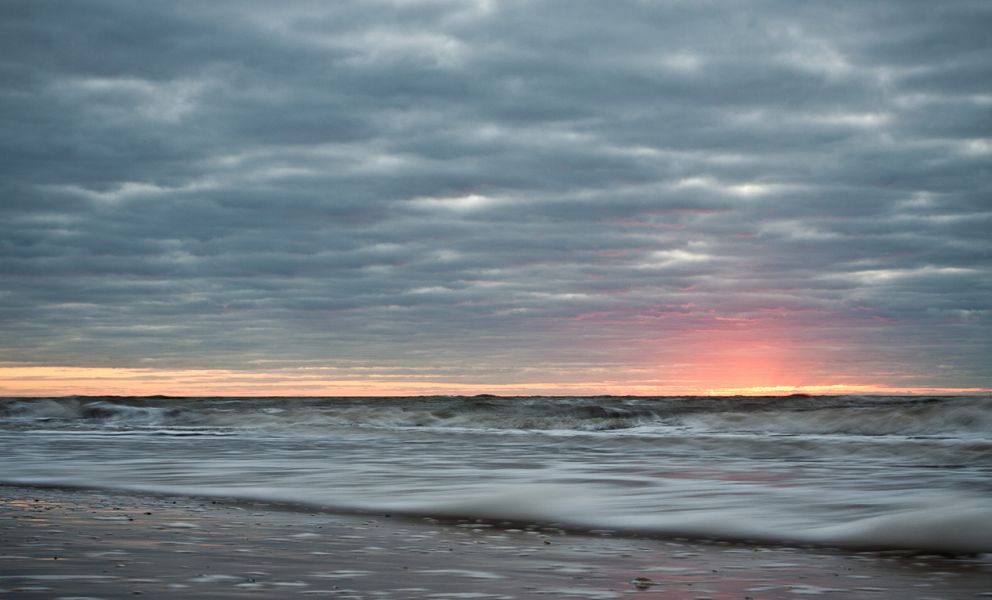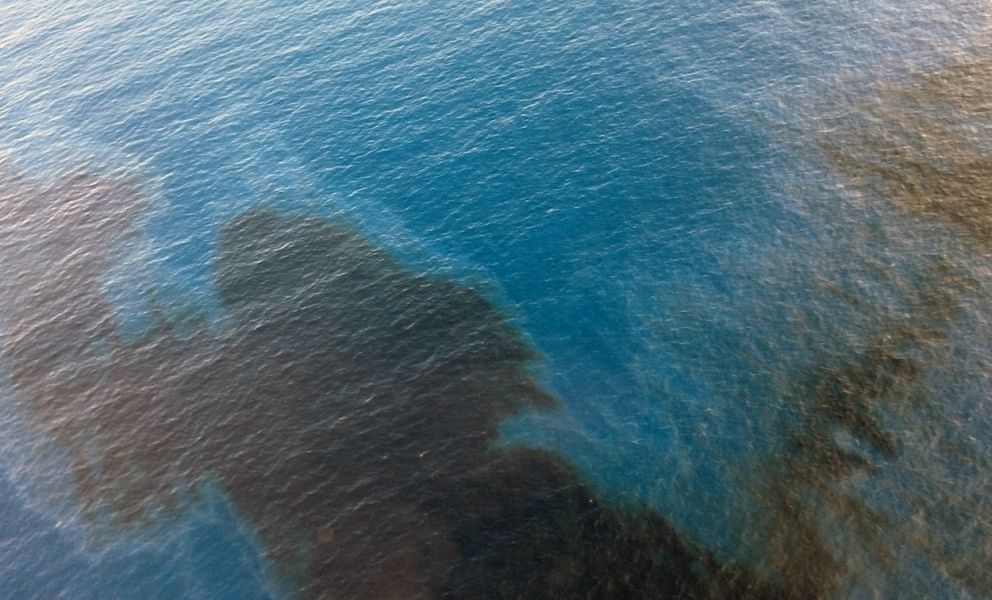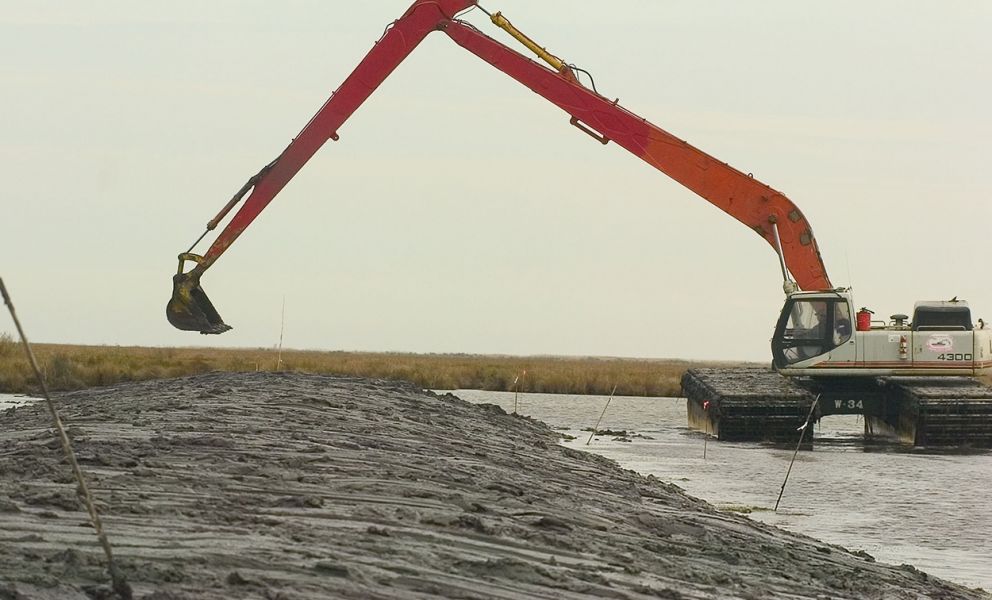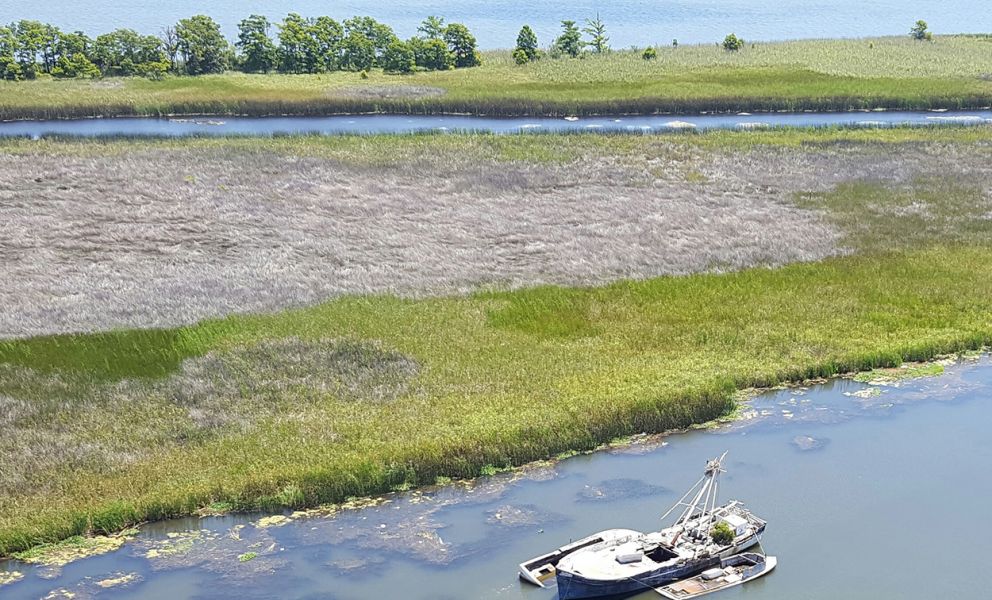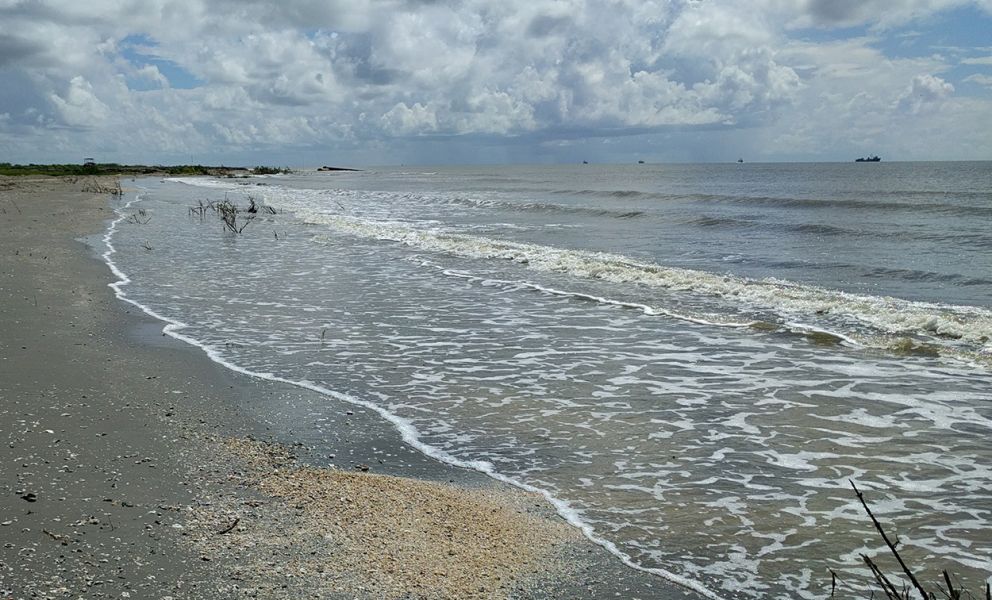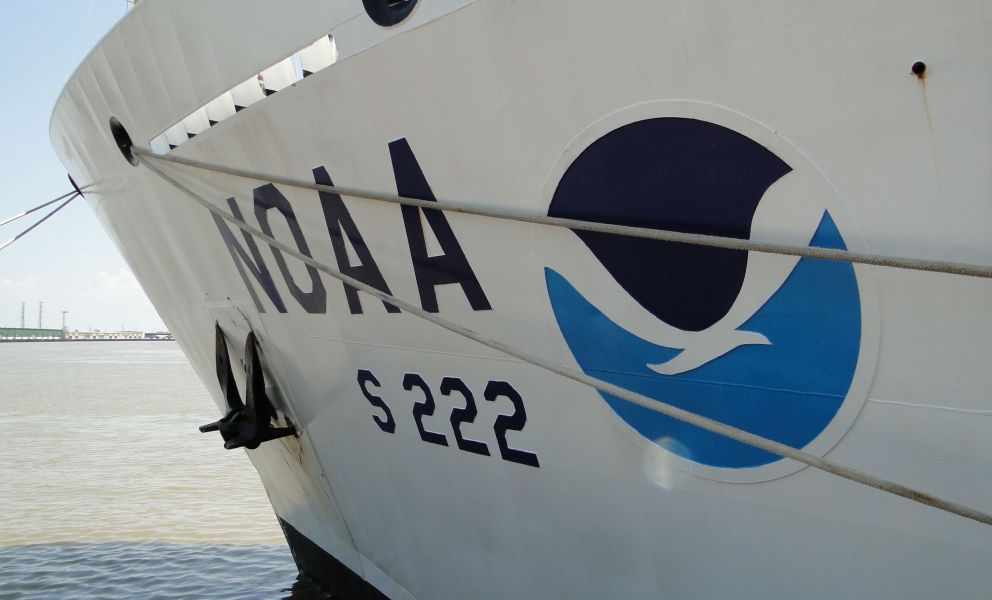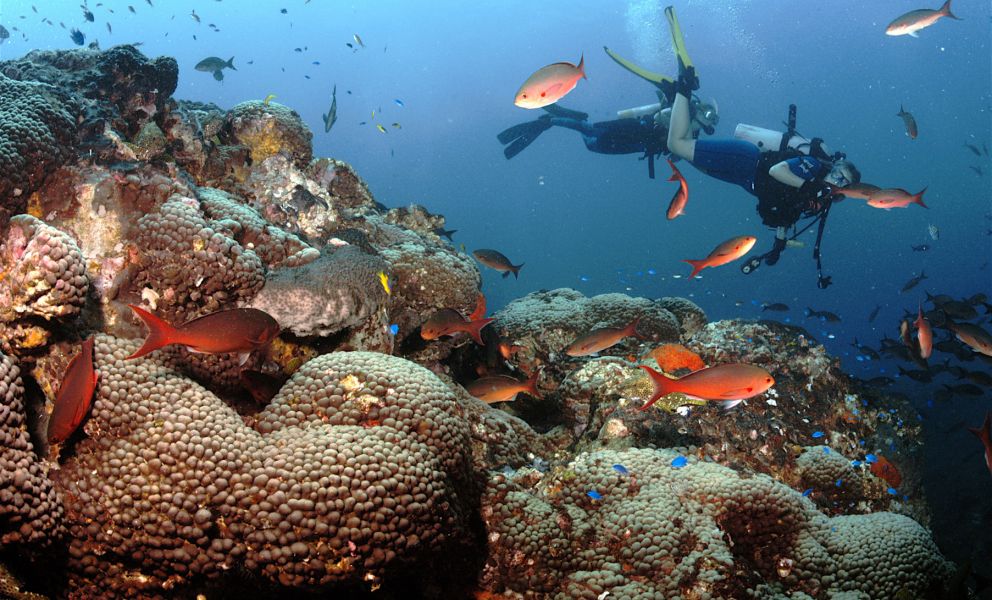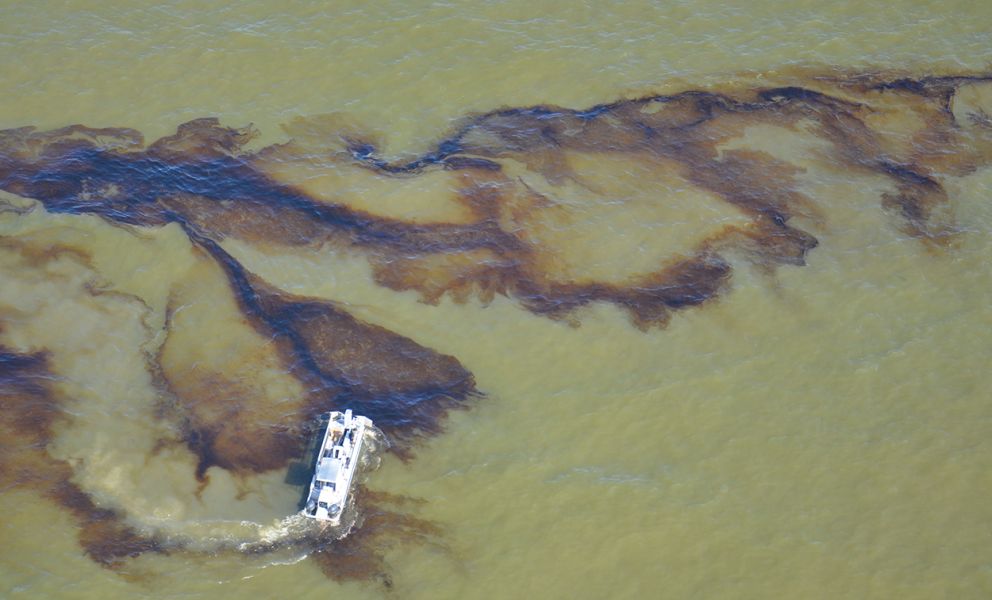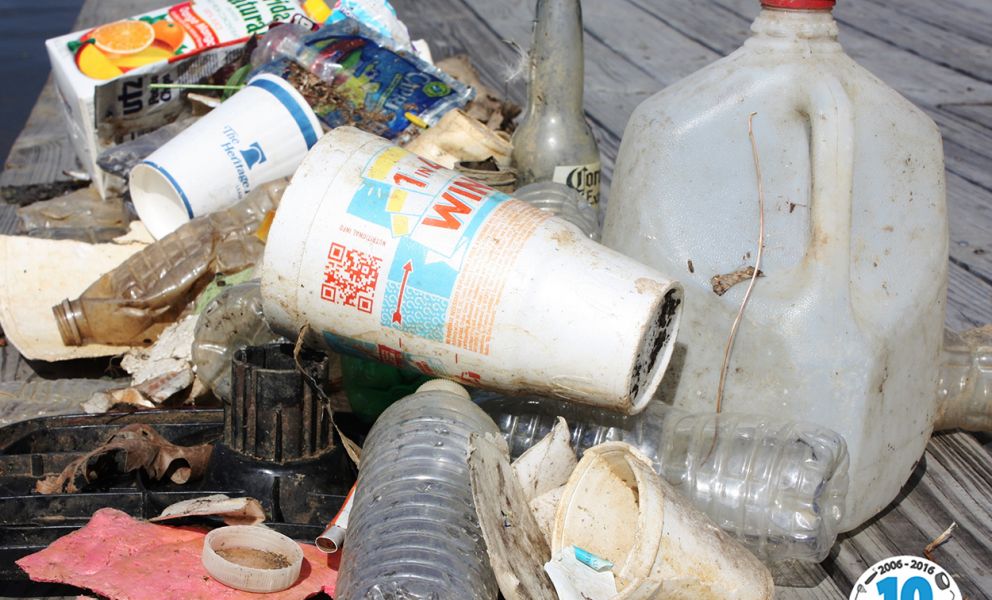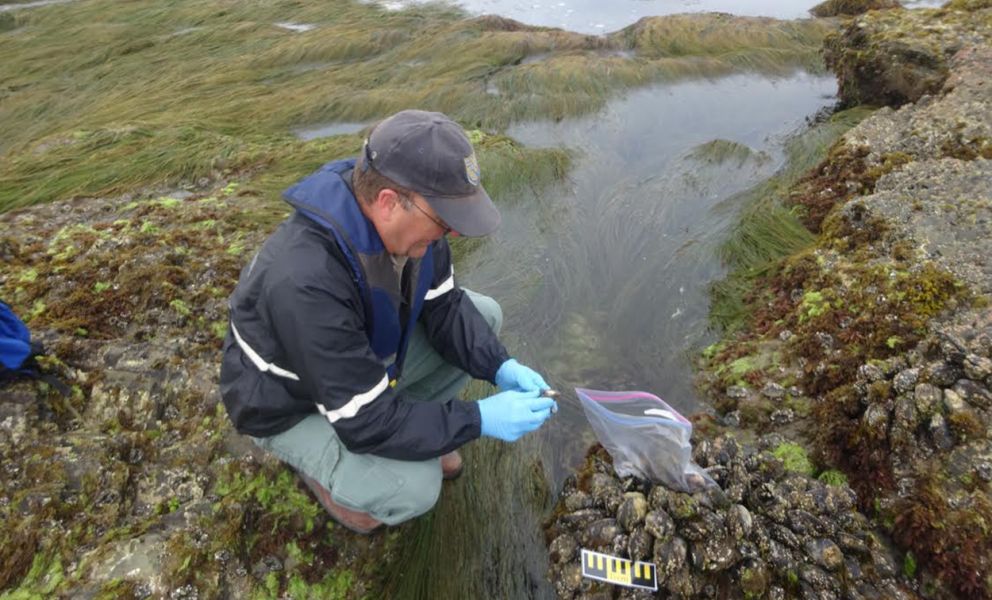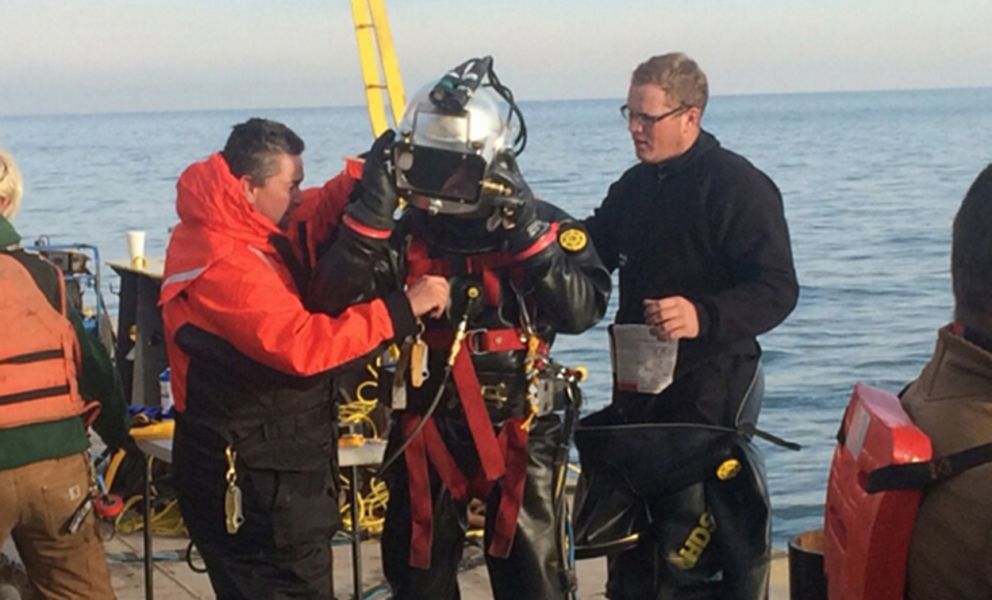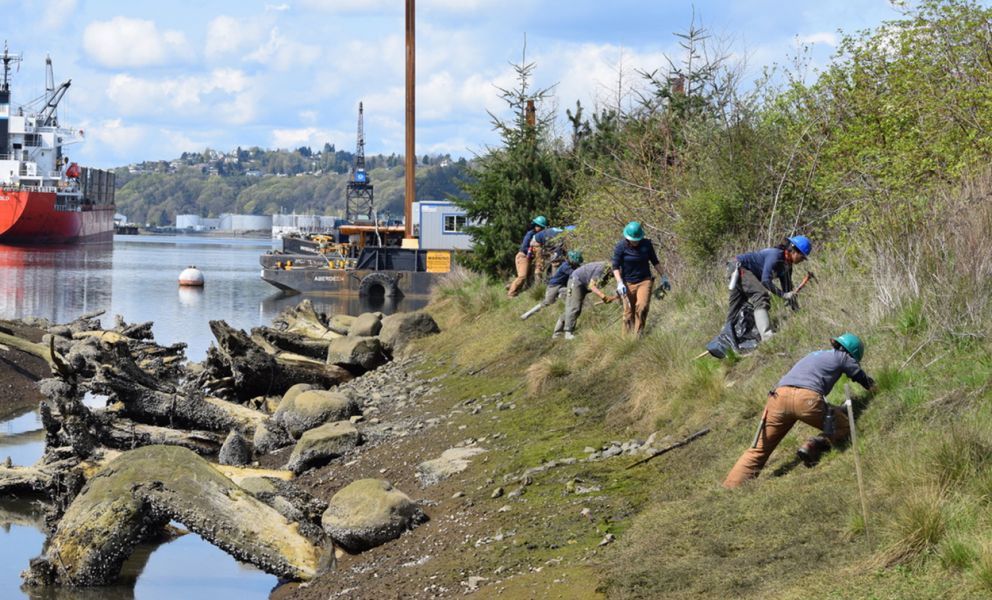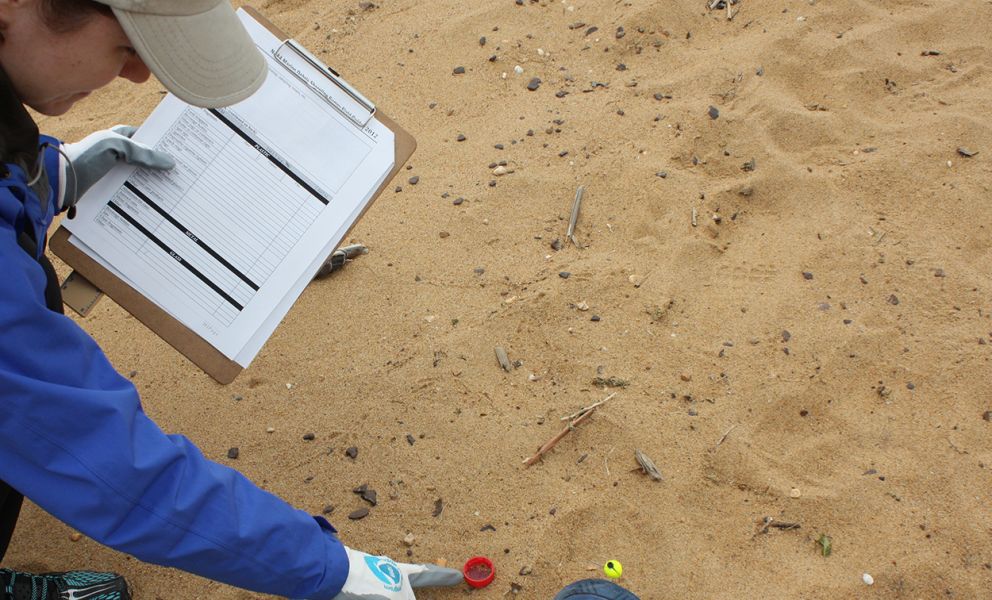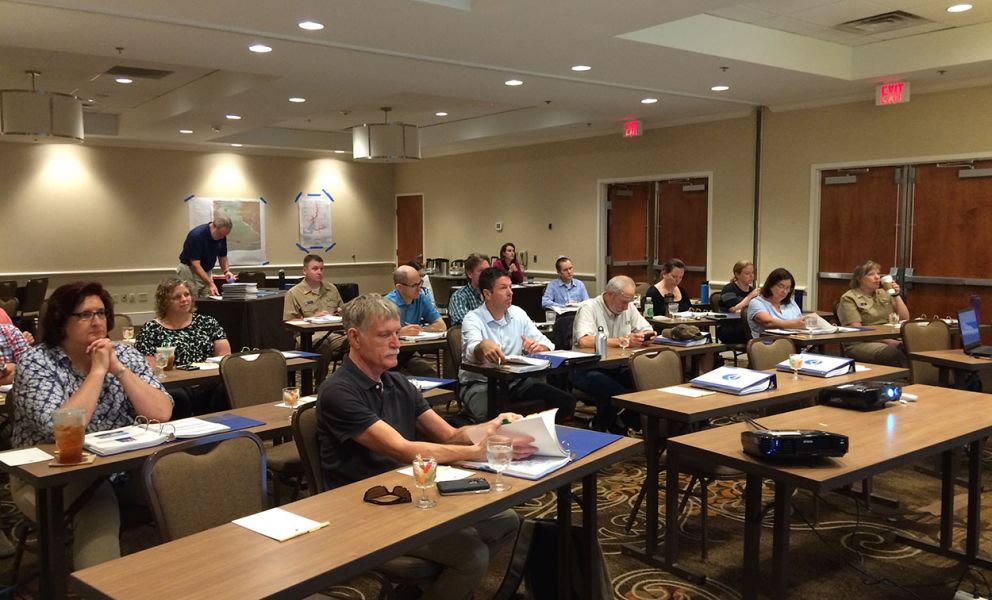The US Coast Guard (USCG) conducted an assessment dive of the the sunken wreck of Tank Barge Argo, lost in 1937 in Lake Erie, when an active chemical plume and odors were noted above the tank barge. The benzene cargo was characterized and ultimately removed. NOAA Office of Response and Restoration’s Emergency Response Division (ERD), with state and federal partners, managed the development of environmental monitoring, water sampling, sediment sampling, and waste disposal plans for the Argo response. Two tug boats collided on the Mississippi River near Columbus, Kentucky, spilling an estimated 120,500 gallons of oil. The oil was heavier than water and was at the bottom of a murky, flowing river; posing unique challenges. ERD provided river flow forecasts, chemistry of the spilled oil, a submerged oil assessment, assistance with a side scan sonar, and assistance with the selection of unique response technologies, such as environmental clamshell dredging. ERD supported the USCG response to an oil spill in the Green Canyon oil reserve area in the Gulf of Mexico, providing oil spill trajectory analysis and information on natural resources potentially at risk from the oil, including species and habitats in the Flower Garden Banks National Marine Sanctuary.
 An official website of the United States government. Here's how you know we're official.
An official website of the United States government. Here's how you know we're official.

